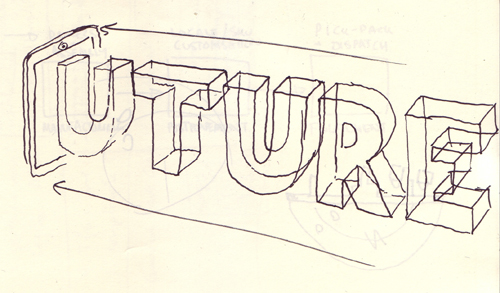Dentsu London are developing an original product called Suwappu. Suwappu are woodland creatures that swap pants, toys that come to life in augmented reality. BERG have been brought in as consultant inventors, and we’ve made this film. Have a look!
Suwappu is a range of toys, animal characters that live in little digital worlds. The physical toys are canvasses upon which we can paint worlds, through a phone (or tablet) lens we can see into the narratives, games and media in which they live.
Dentsu London says:
We think Suwappu represents a new kind of media platform, and all sorts of social, content and commercial possibilities.
Each character lives in different environments: Badger lives in a harsh and troubled world, Deer lives in a forest utopia, Fox in an urban garden, Tuna in a paddling pool of nicely rendered water. The worlds also contain other things, such as animated facial expression, dialogue pulled from traditional media and Twitter, and animated sidekick characters.
The first part of this film imagines and explores the Suwappu world. Here we are using film to explore how animation and behaviours can draw out character and narrative in physical toy settings. The second part is an explanation of how Suwappu products might work, from using animal patterns as markers for augmented reality, to testing out actual Augmented Reality (AR) worlds on a mobile phone.
We wanted to picture a toy world that was part-physical, part-digital and that acts as a platform for media. We imagine toys developing as connected products, pulling from and leaking into familiar media like Twitter and Youtube. Toys already have a long and tenuous relationship with media, as film or television tie-ins and merchandise. It hasn’t been an easy relationship. AR seems like a very apt way of giving cheap, small, non-interactive plastic objects an identity and set of behaviours in new and existing media worlds.
Schulze says:
We see the media and animation content around the toys as almost episodic, like comic books. Their changing characters, behaviours and motivations played out across different media.
Toys are often related as merchandise to their screen based counterparts. Although as products toys have fantastic charm and an awesome legacy. They feel muted in comparison to their animated mirror selves on the big screens. As we worked with Dentsu on the product and brand space around the toys we speculated on animated narratives to accompany the thinking and characters developed.
In the film, one of the characters makes a reference to dreams. I love the idea that the toys in their physical form, dream their animated televised adventures in video. When they awake, into their plastic prisons, they half remember the super rendered full motion freedoms and adventures from the world of TV.
Each Suwappu character can be split into two parts, each half can be swapped with any other resulting in a new hybrid character. Each character has its own personality (governed by its top half) and ‘environment’ (dictated by its bottom half). This allows the creatures to visit each other’s worlds, and opens up for experimentation with the permutations of characters personality and the worlds that they inhabit. It’s possible to set up games and narratives based on the ways that the characters and their pants are manipulated.
This is not primarily a technology demo, it’s a video exploration of how toys and media might converge through computer vision and augmented video. We’ve used video both as a communication tool and as a material exploration of toys, animation, augmented reality and 3D worlds. We had to invent ways of turning inanimate models into believable living worlds through facial animation, environmental effects, sound design and written dialogue. There are other interesting findings in the exploration, such as the way in which the physical toys ‘cut out’ or ‘occlude’ their digital environments. This is done by masking out an invisible virtual version of the toy in 3D, which makes for a much more believable and satisfying experience, and something we haven’t seen much of in previous AR implementations.
We all remember making up stories with our toys when we were young, or our favourite childhood TV cartoon series where our toys seemed to have impossible, brilliant lives of their own. Now that we have the technology to have toys soak in media, what tales will they tell?
































 Meanwhile, from
Meanwhile, from 




